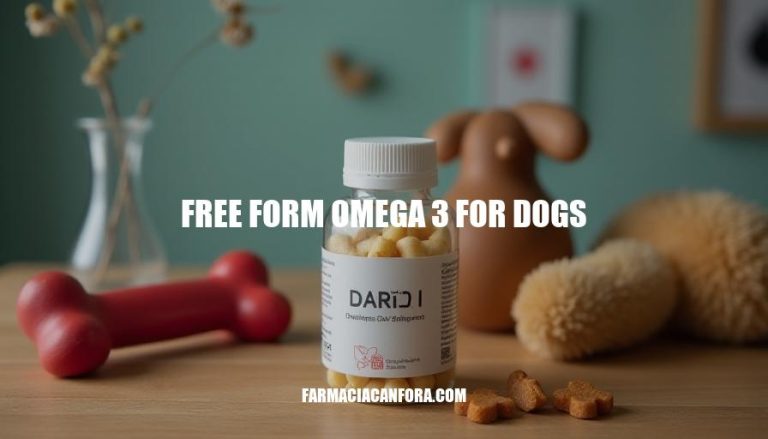


Omega-3 fatty acids are super important for dogs. They help with lots of things like their immune system, brain development, and heart health. Adding them to their food can make a big difference, reducing inflammation, improving skin and coat health, and helping with joint issues.
Free form omega-3 fatty acids, particularly EPA and DHA, offer numerous health benefits for dogs:
Improved Skin and Coat Health: Omega-3 fatty acids help to maintain healthy skin and coat by reducing dryness, itching, and shedding. They can also improve the overall shine and texture of the coat.
Reduced Inflammation: Omega-3s have powerful anti-inflammatory properties that can help reduce joint pain and inflammation in dogs with arthritis or other joint issues.
Support for Heart Health: Omega-3 fatty acids can support heart health by reducing inflammation, lowering blood pressure, and improving overall cardiovascular function.
Joint Health: The anti-inflammatory effects of omega-3s can help alleviate joint pain and improve mobility in dogs with arthritis or other joint conditions.
Cognitive Function: Omega-3s have been linked to improved cognitive function in dogs, potentially reducing the risk of cognitive decline as they age.
Immune System Support: Omega-3 fatty acids can help boost the immune system, making dogs more resistant to infections and illnesses.
Allergy Relief: Omega-3s can help reduce inflammation and alleviate symptoms of allergies in dogs.
To properly administer free form omega-3 to dogs, follow these steps:
Consult Your Veterinarian: Before starting any new supplement, it’s important to consult with your veterinarian to determine the appropriate dosage and ensure it’s suitable for your dog’s specific needs.
Choose a High-Quality Supplement: Look for omega-3 supplements specifically designed for dogs, preferably those derived from cold-water fish like salmon or sardines. Avoid supplements with artificial additives or fillers.
Follow Dosage Instructions: Administer the recommended dosage as directed by your veterinarian or the supplement manufacturer.
Overdosing can lead to side effects, so it’s crucial to stick to the recommended amount.
Incorporate into Meals: Add the omega-3 supplement to your dog’s regular meals. This can be done by mixing the supplement with wet or dry food.
Monitor Your Dog’s Response: Keep an eye on your dog’s skin, coat, joint health, and overall well-being. Adjust the dosage if necessary, based on your veterinarian’s advice.
By following these steps, you can ensure your dog receives the full benefits of omega-3 fatty acids for improved health and well-being.
Free form omega-3 fatty acids, particularly EPA and DHA, offer numerous health benefits for dogs when added to their diet.
These benefits include improved skin and coat health, reduced inflammation, support for heart health, joint health, cognitive function, immune system support, and allergy relief.
To properly administer free form omega-3 to dogs, it’s essential to consult with a veterinarian to determine the appropriate dosage and choose a high-quality supplement specifically designed for dogs.
Following the recommended dosage instructions and incorporating the supplement into meals can help ensure your dog receives the full benefits of omega-3 fatty acids for improved health and well-being.